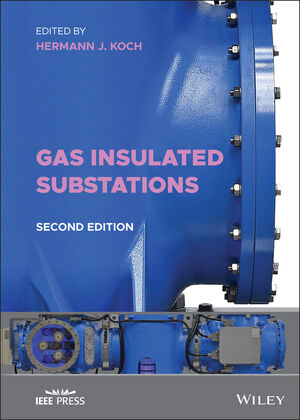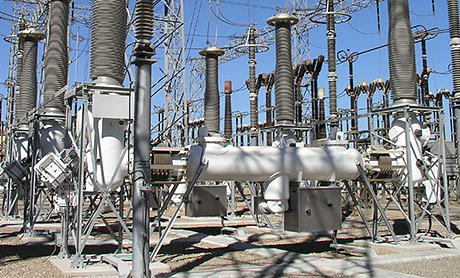A GIS substation is a facility where electrical equipment is used to connect two or more parts of an electric power system. The equipment in a substation includes transformers, switchgear, circuit breakers, and other devices. A substation may also have control and protection devices.
There are many types of substations and the GIS substation is just one of them. A GIS substation uses gas-insulated switchgear in order to provide a higher level of protection for equipment and personnel. This type of substation is typically used in high voltage applications where there is a greater risk of electrical hazards.
Gis Substation Equipment
GIS substation equipment is used to protect and control electrical power systems. This type of equipment is typically found in high voltage applications where it is important to isolate parts of the system from one another. GIS substations can be used in a variety of settings, including power plants, transmission networks, and distribution systems.
GIS substation equipment typically includes a number of different components, such as circuit breakers, transformers, and disconnect switches. Circuit breakers are used to interrupt the flow of electricity in the event of an overload or short circuit. Transformers are used to change the voltage of electricity passing through the substation, while disconnect switches allow for sections of the system to be isolated from one another.
This type of equipment is critical for ensuring the safe and reliable operation of electrical power systems. By protecting against potential problems like overloads and shorts circuits, GIS substations help to keep the power flowing smoothly and safely.
Gas Insulated Substation Wikipedia
A gas insulated substation (GIS) is a high voltage substation in which the primary equipment is enclosed in a sealed environment with sulfur hexafluoride (SF6) gas as the insulating medium. A GIS is typically more compact than an equivalent air-insulated substation (AIS), because the large conductor volumes required for AIS are replaced by much smaller busbars or wires, shielded by the SF6 gas inside metal enclosures. The reduced size of a GIS can reduce land requirements and construction costs.
The main disadvantages of GIS are its high capital cost and the need for skilled personnel to maintain it. The SF6 gas must be regularly replenished, as it escapes from the enclosures due to leakage and decomposition.
Abb Gis Switchgear Manual
If you’re in need of an Abb Gis Switchgear Manual, you’ve come to the right place. Here at EPC Services, we have a wide variety of manuals available for download. Whether you need an installation manual, user manual, or other type of manual, we have what you’re looking for.
When it comes to switchgear, it’s important to have a detailed and accurate manual on hand. That’s why we offer high-quality Abb Gis Switchgear Manuals that are easy to follow and understand. No matter your level of expertise, our manuals will provide the information you need to get the job done right.
Don’t settle for second-best when it comes to your switchgear needs – trust EPC Services for all your manuals and documentation needs. We guarantee your satisfaction with every purchase!
Gis Substation Working Principle
Working Principle of GIS Substation
A gas-insulated substation (GIS) uses a gas-filled dielectric medium to insulate electrical equipment. This type of substation is typically used in high voltage applications, such as transmission and distribution, where space is limited and reliability is paramount.
GIS technology has been around for over 100 years, but its use in substations only became widespread in the 1970s. The first GIS installation in the United States was at a 220 kV substation in Ohio in 1977. Since then, GIS usage has steadily grown due mostly to advances in insulation materials and manufacturing processes.
Today, nearly all new EHV/UHV installations are GIS because it offers many advantages over traditional air-insulated switchgear (AIS). These advantages include:
– Reduced size and weight – up to 60% smaller than AIS for equivalent functionality
– Increased reliability – hermetically sealed environment protects against moisture, dust, salt spray, animals, etc.
– Increased safety – no exposed live parts minimizes risk of electrocution; SF6 is an environmentally friendly gas
– Longer service life – no corrosion or degradation from exposure to the elements
Ais And Gis Substation
An electrical substation is a vital link in the power grid. It transforms voltage from high to low, or the reverse, and also regulates frequency. A substation may also distribute power to local grids.
A typical substation has a switchyard where incoming and outgoing transmission lines are connected together by circuit breakers, transformers, and other equipment. Medium-voltage circuits connect to distribution feeders that supply customers. Substations are usually located near load centers where electricity demand is high.
AIS (Automated Identification System) is used in maritime transportation primarily for identification and tracking of vessels at sea. The system uses transponders on board ships that automatically transmit ship data such as identification, position, course, and speed when queried by an AIS receiver.
GIS (Geographic Information System) is a computer system that captures, stores, analyzes, manages, and presents data that are linked to location(s).
GIS can show many different kinds of data on one map including streets, buildings, elevation contours land use patterns , soils , vegetation cover , wildlife habitat suitability areas .

Credit: www.wiley.com
What is Gis Substation Concept?
The GIS substation concept is a new approach to the design and construction of substations that offers many benefits over traditional substations. The GIS concept uses an innovative modular design that allows for the easy expansion and reconfiguration of substations. Additionally, GIS substations are much more efficient than traditional substations, resulting in lower operating costs.
What is Difference between Ais And Gis Substation?
In an electric power system, a substation is a facility where voltage is transformed from high to low, or the reverse, using transformers. An AIS (Automated Information System) substation is one that uses electronic equipment and controls to monitor and control the grid. A GIS (Geographic Information System) substation is one that uses paper-based maps and other data to manage the grid.
Why Sf6 Gas is Used in Gis?
SF6 is a gas that has been used for over 100 years in a variety of applications. It is a highly stable and environmentally friendly gas, making it an ideal choice for use in GIS (gas-insulated switchgear). SF6 is used in GIS because it provides superior electrical insulation and arc suppression properties.
This makes SF6 ideal for use in high voltage applications where equipment must be able to withstand extreme conditions.
What is the Disadvantage of Gis Substation?
There are a few disadvantages of GIS substations. One is that they can be more expensive to build and operate than traditional substations. Another disadvantage is that GIS substations can be less reliable than traditional substations, due to the fact that they rely on computer systems which can fail.
Finally, GIS substations can take longer to construct than traditional substations.
High Voltage Gas Insulated Switchgear Webinar
Conclusion
A GIS substation is a facility where electrical power is generated and distributed. The substation converts high-voltage electricity from the grid into lower voltages that are used by businesses and homes. The distribution system then sends the electricity to customers through a network of cables, transformers, and other equipment.



